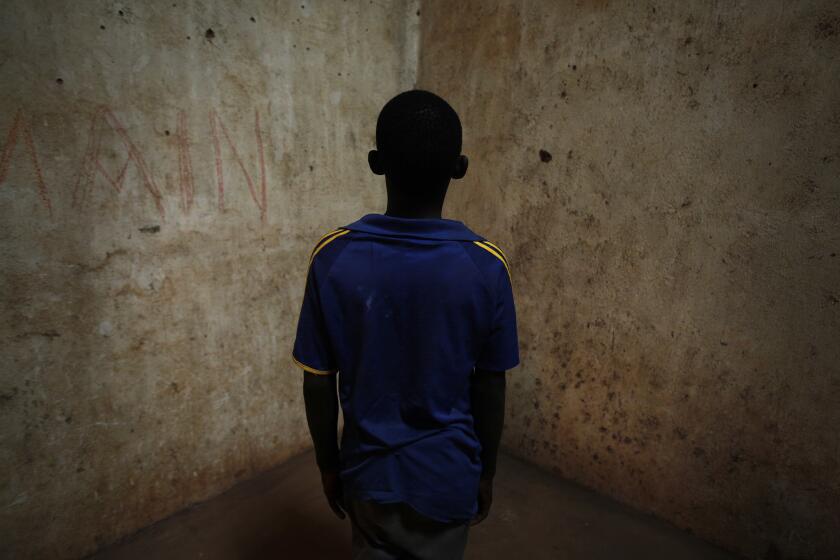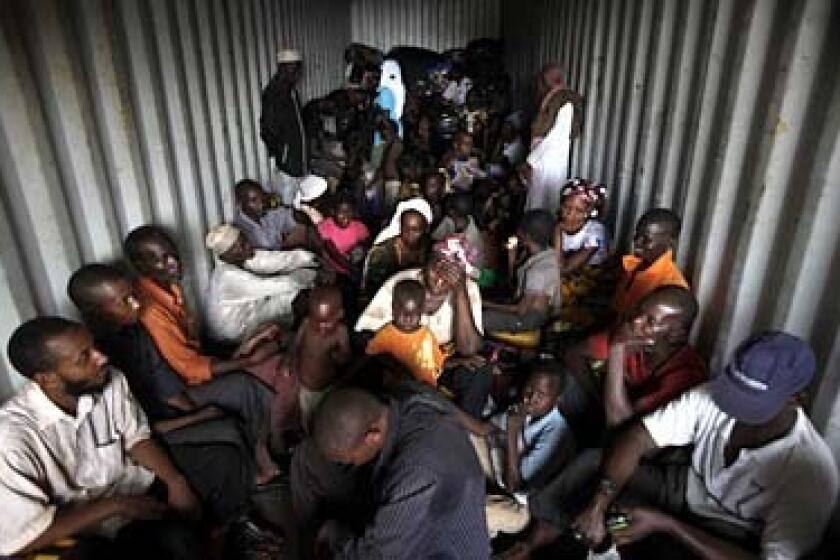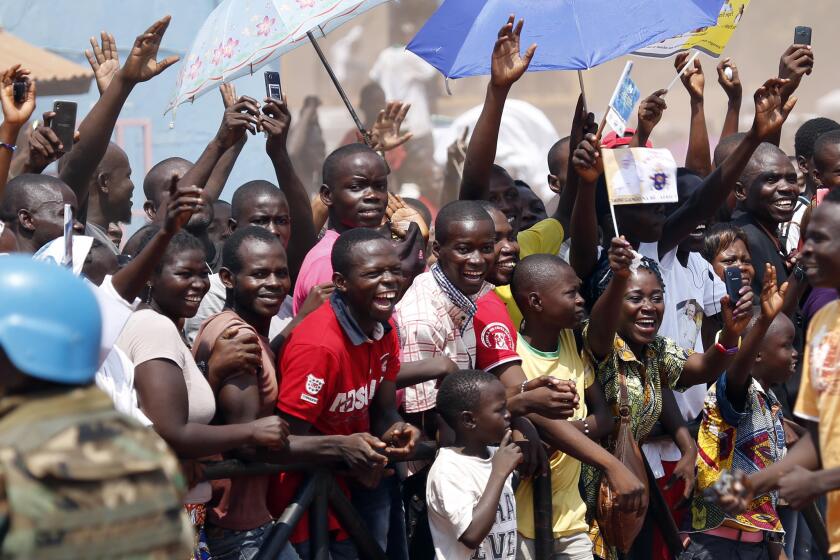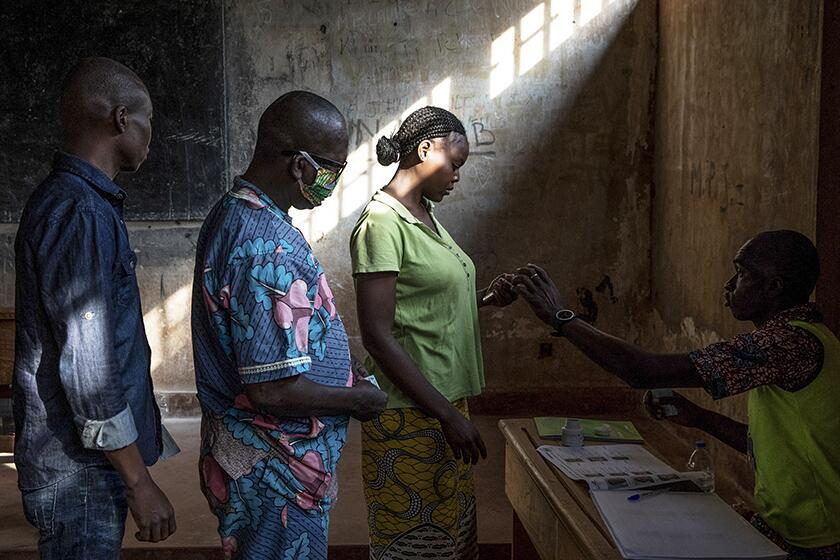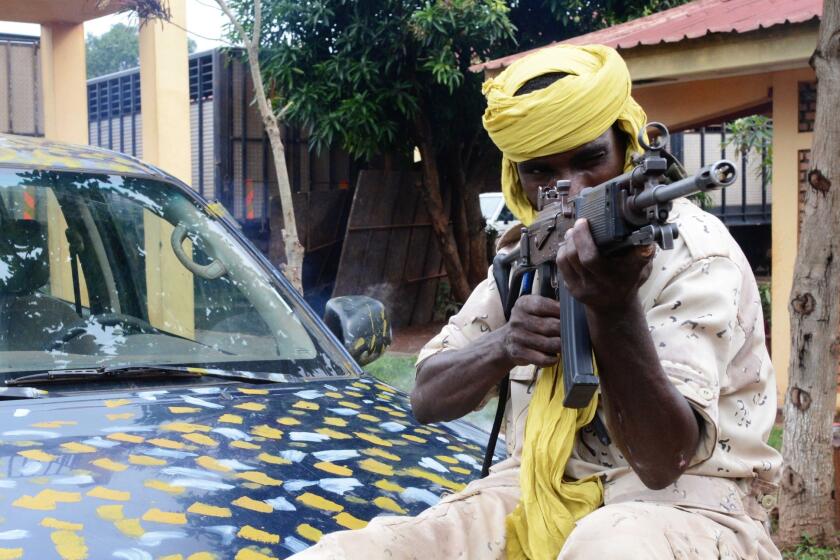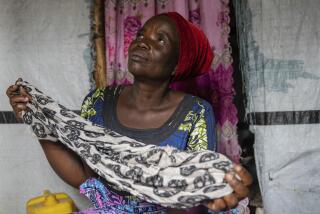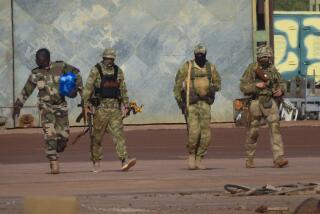Former rebels in Central African Republic disarm but face few options. Wagner is one of them
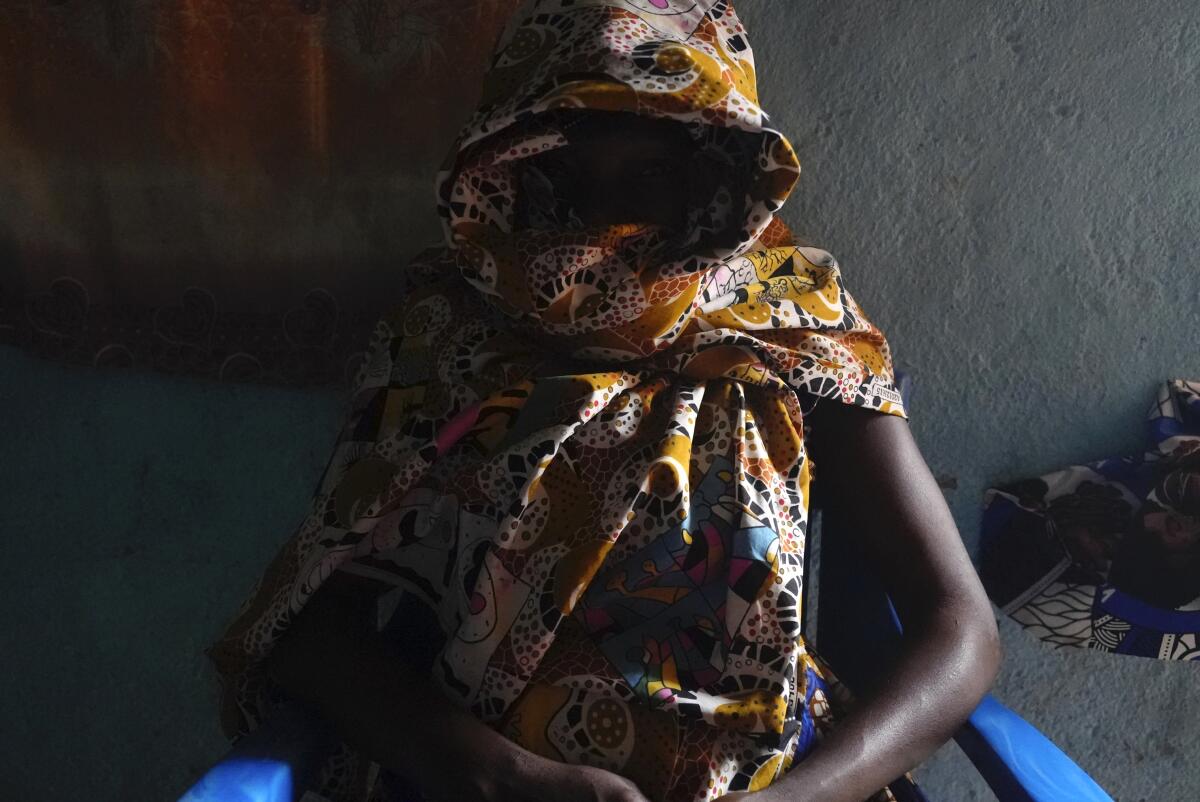
BOUAR, Central African Republic — The bodies of children killed in the crossfire lay on the ground. It was too much for the rebel. After a year of fighting rivals across Central African Republic, the abuses were mounting and he wanted out.
The 42-year-old took advantage of a nationwide program meant to help people like him lay down their guns. He trained in entrepreneurship, received a bi-weekly stipend of about $35 and was told to return to civilian life.
But there’s little normal life for veteran fighters in one of the world’s most volatile countries. He couldn’t find work, was shunned by his family for his violent past and was threatened by enemies. Two years later he became a fighter again, this time helping Russian mercenaries combat the armed groups he had left.
Nearly 5,000 fighters have put down their arms in Central African Republic since the program launched about a decade ago. Yet former rebels, communities and conflict experts say it’s hard to stop fighting in a country where little other paid work exists.
Conflict in the Central African Republic has torn the nation apart, bringing childhood to a halt and sent many fleeing.
Central African Republic has been in conflict since 2013, when predominantly Muslim rebels seized power and forced the president from office. Mostly Christian militias fought back. A 2019 peace deal only lessened the fighting, and six of the 14 armed groups that signed later left the agreement.
Another armed presence is Wagner, the Russian mercenary group tasked with protecting the presidency and securing the country. Its fighters have been accused by rights groups and civilians of recruiting a local militia to help it fight rebels while committing abuses and exploiting Central African Republic’s rich mines and forests.
Some of those militia members went through the national program to disarm.
The Associated Press spoke with four fighters in the western city of Bouar and the capital, Bangui, who went through the program. One is the 42-year-old who spoke on condition of anonymity for fear of reprisal.
Central African Republic’s government estimates that up to 15% of those who go through the disarmament program return to armed groups. It is not clear if that includes Wagner. The United Nations, which piloted and supports the program, has said it loses track of about 70% of people who participate.
Experts call the program shortsighted, with combatants given few viable options beyond fighting. Nearly 70% of people in Central African Republic live in extreme poverty, according to the World Bank.
Former fighters are recruited by Wagner or return to communities that are marginalized or attacked by security forces and Wagner allies, “which can easily cause them to take up arms again,” said University of Montreal researcher Alexandra Lamarche.
Neither option will lead to lasting peace, she said.
The disarmament program began in 2015 as a pilot initiative by the U.N. peacekeeping mission. Three years later, it expanded and the government took over.
The program encourages fighters to lay down their arms and dissuades potential recruits. To join, fighters must hand in a gun or several hundred cartridges of ammunition. They are given the choice of joining the security forces or doing vocational training.
But former combatants say the training isn’t long enough to learn a skill, and the army doesn’t take everyone.
Pope Francis arrived Sunday in the conflict-torn Central African Republic, brushing aside security concerns to bring a message of peace and reconciliation to a country where violence between Christian and Muslim militants has forced nearly 1 million from their homes over the last two years and divided the capital city.
Anatol Clement Bannem, the U.N. peacekeeping mission’s program coordinator in Bouar, said many fighters who leave armed groups wait for months to enter the program. He has 10 waiting.
“I have weapons here that have been given to me some three months ago, and yet the people do not know where they are going,” Bannem said.
Conflict hurts the program’s consistency, said Jules Gautier Ngbapo, its communications officer. In Bouar, the program stopped six months after it began in 2017 because rebel leaders objected, and it restarted only after the peace deal.
Boundaries between armed groups can be fluid. A report last year by the investigative group the Sentry found that some militia members fighting alongside Wagner had been formally integrated into the military, while others had not. A U.N. report in 2022 said the national defense forces recruited some fighters and used them as proxies.
International Crisis Group researcher Charles Bouessel said he has spoken with several rebels who went through the disarmament program and then were recruited by Wagner and the government in Bangui and the Ouaka region.
Voting begins in Central African Republic’s presidential and legislative elections after a campaign period marked by violence between rebels and government forces.
“This raises the question of the purpose and credibility of government disarmament programs,” Bouessel said. He warned the practice could fuel tensions, and allied armed groups could turn against the government.
The government says only former combatants who have officially reintegrated into the army work with Wagner. “We don’t work with militia ... It’s the national army that recruits and gives [people] to Wagner. Then Wagner can choose among the soldiers,” said Fidele Gouandjika, special advisor to the president.
But the former fighter now working with Wagner said he never went through military training after the disarmament program. He asserted that the government quietly pays him about $130 a month to help Wagner locate mines to exploit and collect information about rebels, without giving evidence.
The Russians “wanted me to work with them since I had fought as a rebel,” he said.
The Russian government did not respond to a request for comment. The special advisor to the president denied his account was true.
The World Bank, which has invested about $30 million in the program since 2017 and has committed $90 million more until 2028, said it is aware of such allegations but that its funding goes through international partners, not the government.
JOHANNESBURG, South Africa -- French officials said Tuesday that they would deploy troops to the Central African Republic amid reports of violent chaos and warnings that the country could be sliding toward a sectarian civil war.
A U.S. State Department spokesperson said the U.S. has given more than $3.5 million to the program since 2016 but the money will end this year, calling it a step toward the government’s ownership of the process.
The U.S. spokesperson said they were familiar with reports that Wagner recruits from among armed groups to partner with “and consider them credible.”
Former fighters who haven’t returned to conflict say they struggle.
Sitting beside an idle sewing machine that she received in training, Carole said she doesn’t feel comfortable making clothes, afraid she’ll make a mistake after receiving little instruction. She gave only her first name out of fear of reprisals.
The 32-year-old joined rebels in 2013 after other fighters attacked Bouar, killing her mother and father. She worked as a cook but escaped after watching fellow rebels decapitate two rivals.
Clashes between armed groups in the Central African Republic town of Bria have left at least 100 people dead in the wake of a peace agreement signed this week in Rome that called for an immediate cease-fire, officials said Wednesday.
Now she works in the market, barely supporting her three children. She worries her 15-year-old son might be recruited to fight by armed groups operating about 30 miles from town.
“The threat is the lack of jobs and poverty. Some people wake up and only have coffee all day,” said Lazare Ouango, a local chief who said he spent months going door-to-door to explain the importance of acceptance for former combatants. Many traumatized residents didn’t trust fighters to return peacefully.
Wilson Koudinguere hung his head as he listed some of the civilians he killed during his years with armed groups. “We did so many bad things,” he said.
Lifting his shirt, he pointed to a scar where he said his commander shot him when he first tried to leave. He finally left in 2018 and trained with the army. But he wasn’t recruited.
He now survives off handouts from friends and family and looks for work, determined never to fight again.
Mednick writes for the Associated Press.
More to Read
Sign up for Essential California
The most important California stories and recommendations in your inbox every morning.
You may occasionally receive promotional content from the Los Angeles Times.
